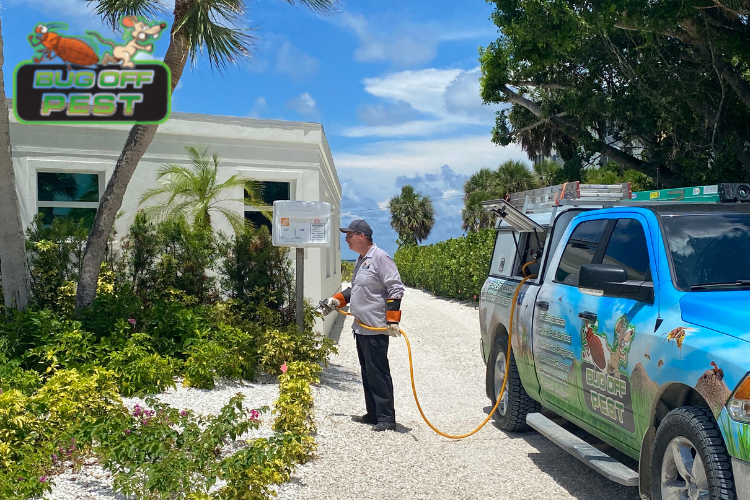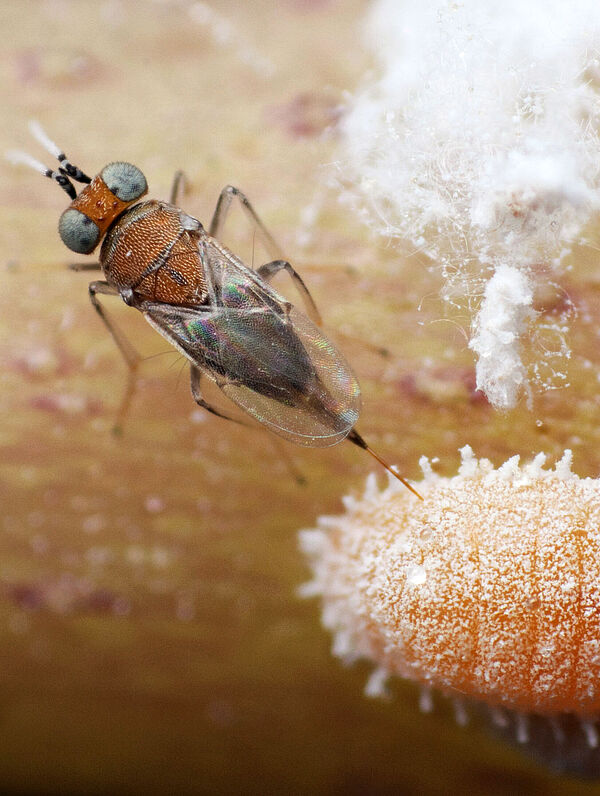Top-tier Mosquito Control Services for a Pleasant Outdoor Living Space
Learn More About the most up to date Advancements in Bug Control and Exactly How to Implement Efficient Therapy Solutions
In the last few years, the field of pest control has experienced substantial developments, driven by the need for efficient and lasting therapy options. Ingenious strategies such as Integrated Insect Monitoring (IPM) combine environmentally friendly exercise with advanced modern technology, enhancing both efficiency and environmental responsibility. Moreover, the combination of smart innovations and DIY methods has actually equipped individuals to tackle insect problems better. As we explore these developments, it ends up being vital to recognize exactly how ideal to implement these approaches in different settings to achieve optimum outcomes. The ramifications for insect monitoring practices could be transformative.
Eco-Friendly Parasite Control Options
Over the last few years, the need for environmentally friendly insect control choices has risen as home owners and companies alike seek sustainable choices to typical chemical treatments. This change is driven by expanding ecological understanding and a wish to decrease the wellness dangers associated with synthetic chemicals.

Eco-friendly parasite control techniques encompass a variety of approaches that prioritize the use of all-natural substances and techniques. Integrated Insect Management (IPM) is one such approach, incorporating biological, social, and mechanical tactics to handle bug populations while lowering reliance on chemicals (Wildlife removal services). This holistic approach stresses avoidance via environment adjustment and the intro of natural predators, therefore promoting a balanced ecosystem
Another popular alternative is making use of organic chemicals originated from plants, which have a tendency to be much less harmful to non-target microorganisms. Products like neem oil and diatomaceous earth have actually acquired grip for their effectiveness in regulating insects while posing marginal threats to human wellness and the environment.
Additionally, exemption techniques, such as securing access points and maintaining tidiness, play an essential duty in environment-friendly pest management. By adopting these lasting techniques, people and organizations can successfully take care of insects while advertising a healthier earth for future generations.
Smart Innovation in Parasite Management
Development is reshaping the landscape of bug administration, with clever modern technology becoming a crucial force in improving performance and effectiveness - Wildlife removal services. The combination of Internet of Points (IoT) devices, synthetic knowledge (AI), and data analytics is revolutionizing exactly how insect control experts approach invasions
Smart catches equipped with sensors can identify insect activity in real-time, sending out immediate informs to operators. This enables prompt reactions, minimizing damage and decreasing the need for substantial therapies. Furthermore, AI formulas analyze historic information to forecast parasite behavior, enabling positive treatments based upon ecological problems and infestation patterns.
Drones and computerized vehicles are also playing a substantial function in bug management, offering airborne assessments of huge areas, recognizing hotspots, and even dispersing targeted treatments. These innovations not just improve procedures but also improve security by restricting human direct exposure to possibly damaging chemicals.
In addition, mobile applications empower customers to keep an eye on bug activity and gain access to expert guidance, promoting a collaborative strategy to pest monitoring. Generally, the fostering of wise innovation is setting a new standard in pest control, emphasizing data-driven choices and sustainable methods that inevitably profit both homeowners and experts alike.
Integrated Parasite Management Strategies
Integrated Bug Monitoring (IPM) employs an all natural method to pest control, integrating various strategies to properly take care of pest populations while reducing risks to human health and the environment. IPM focuses on recognizing the pest life cycle, their natural opponents, and the ecosystem in which they grow.
One of the fundamental parts of IPM is checking pest populaces through normal evaluations and data collection. This permits the recognition of insect thresholds, identifying when treatment is needed. Cultural practices, such as plant habitat, turning, and sanitation manipulation, are necessary in lowering bug prevalence and advertising plant wellness.
Mechanical controls, consisting of barriers and traps, are also essential in IPM. These methods can physically get rid of or deter pests without using chemicals. When necessary, the judicious application of chemical controls is used, concentrating on targeted therapies that minimize environmental effect.
Education and partnership amongst stakeholders, consisting of farmers, bug control specialists, and the community, are essential for the effective execution of IPM strategies. By prioritizing sustainable techniques, IPM not only addresses pest concerns but likewise promotes a much healthier environment.
Biological Control Techniques
Countless biological control techniques are significantly acknowledged for their effectiveness in handling bug populations while advertising ecological balance. These methods harness all-natural predators, bloodsuckers, and pathogens to reduce pest numbers without counting on synthetic chemicals. For circumstances, the intro of ladybugs can effectively control aphid populaces, while nematodes target soil-dwelling pest larvae.
In addition, making use Bonuses of microbial pesticides, such as Bacillus thuringiensis (Bt), supplies an ecologically pleasant option for managing caterpillar pests. These products specifically target pest types, lessening harm to beneficial bugs and pollinators. In addition, preservation biological control stresses enhancing environments for all-natural adversaries, such as birds and beneficial bugs, thereby encouraging their presence in farming systems.
Study remains to expose cutting-edge approaches within this field, such as using pheromones to interrupt pest mating patterns or the development of biocontrol representatives through genetic engineering. Implementing these approaches can cause sustainable insect monitoring practices that alleviate the dependence on chemical interventions, ultimately promoting much healthier ecosystems. As awareness of these methods expands, they are becoming integral components of integrated parasite monitoring (IPM) methods, providing a balance between effective insect control and environmental stewardship.
DIY Parasite Control Solutions
As homeowners look for efficient ways to take on bug issues, do it yourself insect control remedies have actually acquired popularity for their accessibility and cost-effectiveness. These methods empower people to address problems making use of readily available products and strategies, typically without the demand for professional treatment.

Furthermore, keeping proper sanitation and normal inspections can stop bug entrance and nesting (Wildlife removal services). Basic techniques, such as securing fractures, removing food resources, and decluttering, can substantially reduce parasite populaces. Traps, both homemade and readily readily available, can likewise use reliable solutions for tracking and controlling specific parasites like pests or rodents

Verdict
The combination of environment-friendly insect control choices, smart technology, and cutting-edge management approaches offers a comprehensive strategy to reliable bug administration. By accepting Integrated Pest Administration (IPM) and his explanation using biological control approaches, alongside do it yourself solutions, liable and lasting pest control can be accomplished. These improvements not just boost the efficiency of insect management methods but also add to a much healthier setting. Carrying out these techniques fosters a balanced community while efficiently dealing with pest populaces. get rid of cockroaches
Environment-friendly bug control approaches incorporate a range of techniques that focus on the use of all-natural compounds and techniques. Integrated Insect Administration (IPM) is one such approach, combining biological, social, and mechanical tactics to manage bug populations while decreasing dependence on chemicals. As understanding of these techniques grows, they are coming to be important parts of incorporated insect monitoring (IPM) approaches, offering an equilibrium between effective parasite control and ecological stewardship.
The combination of green insect control options, clever technology, and cutting-edge management methods offers an extensive method to reliable parasite management. By welcoming Integrated Insect Monitoring (IPM) and using organic control techniques, together with Do it yourself solutions, sustainable and responsible insect control can be achieved.